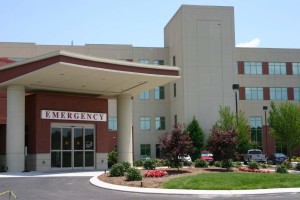Georgia stayed in 40th place among states in percentages of hospitals with top safety ratings, in the latest report from the Leapfrog Group.

The report, released Tuesday, said that fewer than 20 percent of Georgia hospitals earned an “A’’ grade on patient safety.
Fourteen of the 74 Georgia hospitals that were rated got “A’s” from Leapfrog, a patient safety organization founded by employers, which issues the rankings semi-annually.
The 14 hospitals include large urban/suburban hospitals and smaller, rural facilities. A link to the Georgia list is here.
One of the Georgia facilities, Gordon Hospital in Calhoun, has received the top grade in every ranking since Leapfrog launched its report. (Here’s a recent GHN article on Gordon Hospital.)
Leah Binder, president and CEO of Leapfrog, said in a statement that ‘errors and infections in hospitals are the third leading cause of death in America, and people deserve to know which of their hospitals are best at preventing them.”
No Georgia hospital received an “F’’ grade.
Leapfrog gives grades to more than 2,600 hospitals in the 50 states and Washington, D.C., based on how they prevent medical errors, injuries, accidents and infections. Not all hospitals are graded: Critical access hospitals and pediatric facilities are excluded because of insufficient data.
It’s estimated that there are more than 1,000 deaths every day from preventable medical errors.

Leapfrog says consumers can use the rankings to find how well a hospital does in preventing infections and encouraging handwashing; in entering prescriptions through a computer; and in the availability of qualified nurses.
A handful of states have shown dramatic improvement over the five years of Leapfrog rankings. Rhode Island hospitals, which were ranked 50th in 2012, came in first in the new rankings.

Other states with significant improvement include Oregon, going from 48th in 2012 to eighth today; Hawaii, from 36th to third; Wisconsin, from 44th to sixth; and Idaho, from 19th to fourth.
“What we’ve learned is that transparency has a real impact on patient safety,’’ Binder said in a statement. “By making the Hospital Safety Grades public, we’ve galvanized major changes in these states and many communities.
“Not only does it require dedication from national organizations, such as Leapfrog, to make this information public, but also from local coalitions, regional leaders, employers, business leaders and other community organizations to work with these hospitals and their communities to improve the quality and safety of health care.”

Georgia Watch, a consumer advocacy organization, has served as a “Regional Leader’’ in metro Atlanta for The Leapfrog Group for the past two years.
“We encourage use of the Leapfrog Hospital Safety Grades in helping consumers make informed decisions about their health care,’’ said Beth Stephens of Georgia Watch. “It was disappointing to see once again that fewer than 20 percent of hospitals in Georgia rated by the Leapfrog Group received an “A” Grade.
“Part of our job as a Regional Leader is to encourage hospitals in our region and state to always strive for improved patient safety. We appreciate the hospitals that voluntarily participate every year in the Leapfrog Hospital Survey to provide information about their safety practices and outcomes to consumers.”

Leapfrog said that in the new rankings, 832 hospitals earned an “A,” 662 a “B,” 964 a “C,” 159 a “D” and 15 an “F.”
The hospitals with F’s are located in California; Washington, D.C.; Florida; Illinois; Maryland; Mississippi; New York; and Tennessee.
The five states with the highest percentage of “A” hospitals this fall are Rhode Island, Maine, Hawaii, Idaho and Virginia. And the five with the lowest percentage of “A” hospitals this fall are North Dakota, Washington, D.C., Delaware, Maryland and New York.
Earl Rogers, president and CEO of the Georgia Hospital Association, said of the rankings that “hospitals are leaders in transparency with regard to quality measurement and have shared safety and quality data with the public for more than a decade. When making health care decisions, patients should use all available tools at their disposal, such as talking with friends and family and consulting with doctors, nurses and other health care providers.”
Leapfrog, in compiling the grades, used publicly available data from the federal Centers for Medicare & Medicaid Services (CMS), the Leapfrog Hospital Survey, the Agency for Healthcare Research and Quality (AHRQ), the CDC, and the American Hospital Association’s Annual Survey and Health Information Technology Supplement.

